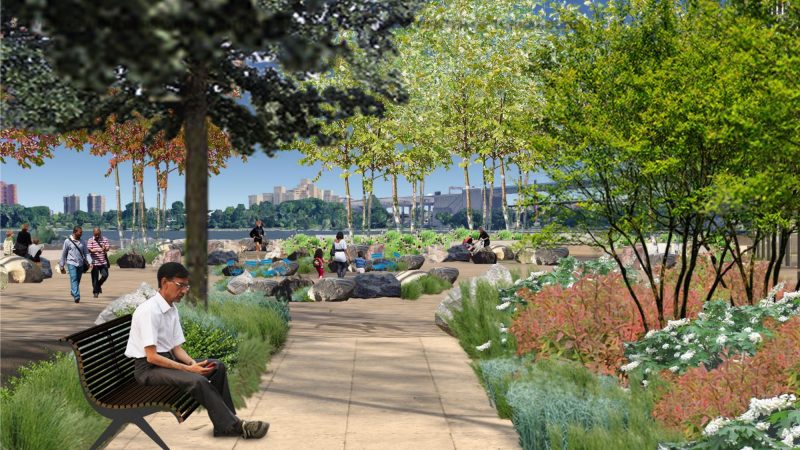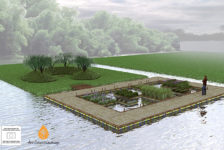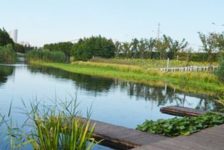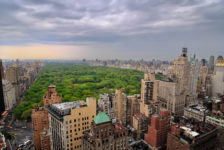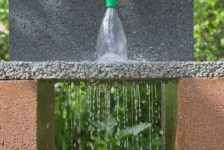Amidst the bustle of the farmer’s market, a short walk from home in Manhattan, we’re buying flowers for our garden and food for the week. Within the burgeoning spring of Union Square, surrounded by blossoming trees and the season’s early fruits and foraging (ramps, mushrooms, asparagus), I find myself thinking about something I rarely pause to consider. A thing fundamental to our lives and to our work as architects and landscape architects.
I was thinking about dirt.
I asked about. . . .
GROUND
What is ground? Beneath this concrete topography, where is original earth? What’s the nature of nature? Nestled in urban pockets in this urban square, or exposed in the countryside: is one really more natural than the other? Climate change: what happens to our island home as land becomes sea? And where does all this food come from anyway?
Food is where I began.
Union Square, Manhattan: Rick Bishop is a soil geek, an aficionado. Owner of Mountain Sweet Berry Farms, we see Rick weekly at Union Square’s greenmarket, where we’ve bought food for two decades. Legendary among celebrity chefs for his produce (potatoes and strawberries), Rick is passionate about one thing. Dirt. He explains constructing soil, layering minerals in a “Neapolitan ice cream” of limestone, Aragonite, and phosphate to create the most “delicious” soil, the most nutritious and flavorful vegetables. Rick helps me understand nature is artifice; constructing better earth helps us create better things on the earth.
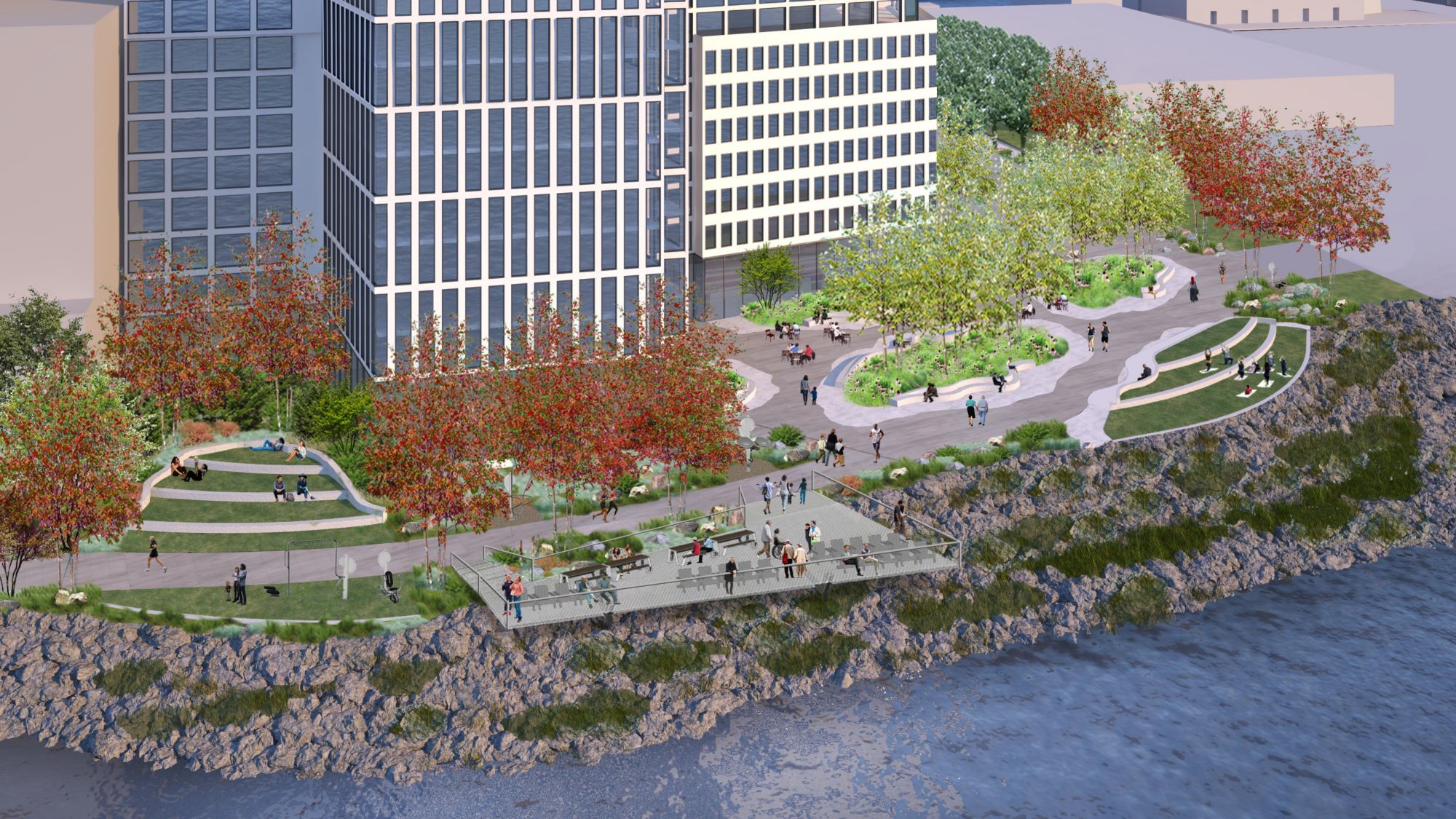
Halletts North Rendering – Courtesy of STUDIO V Architecture / “Our designs blur lines—the edges that influence our approach to earth and ground. Edges where we are reconnecting neighborhoods, restructuring waterfronts, and reconnecting habitats.”
MANMADE DIRT
Contemporary cities manipulate and manufacture dirt. Ground is no longer a condition; it is a concept. The ground of cities is constructed, hills leveled, valleys filled. Countryside is equally (even more?) unnatural: deforested and reforested, threaded with highways and power grids, vast areas dedicated to that ultimate artifice: agriculture. New York City: Center to Edge. Central Park: seeming preserved pocket of landscape is brilliantly reconstituted nature, a masterpiece of natural prosthesis and drainage engineering. The Waterfront: a 526-mile-long catalog of interventions mapping the radical re-sculpting of natural landscapes. It’s all artificial.
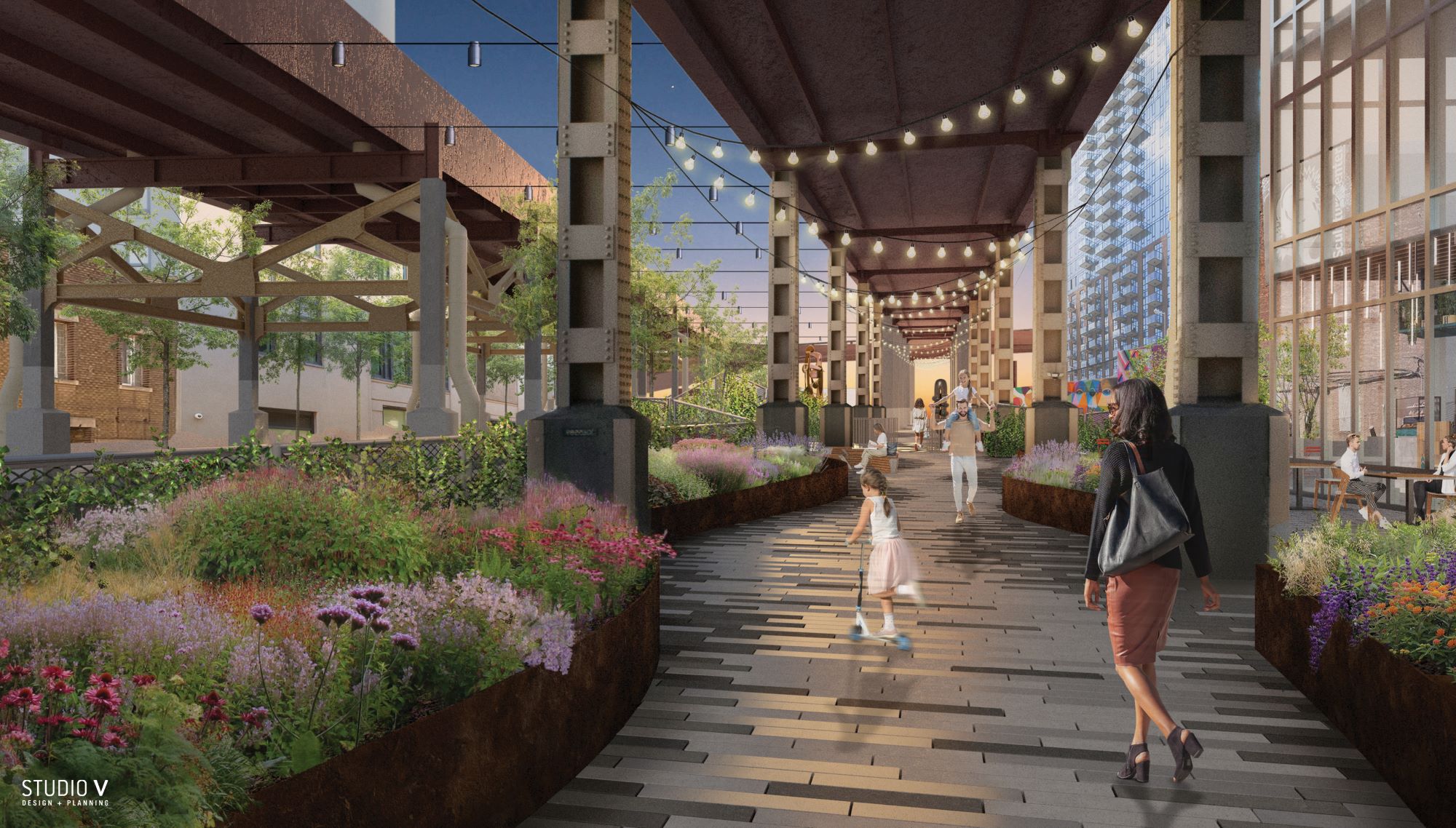
The Underline at Dutch Kills Rendering – Courtesy of STUDIO V Design + Planning /
“In our work, embracing artifice offers creative possibilities to rethink cities, gardens, and architecture. We reinvent ‘ground.’”
ARTIFICIAL GROUND PLANE
In our work, embracing artifice offers creative possibilities to rethink cities, gardens, and architecture. We reinvent “ground.” We create landscapes atop buildings, habitats on roofs, parks on industrial ruins and green spaces beneath highways and on bridges. Urban real estate is limited, so we create horizons. Within the incessant urban growth and transformation, cities are returning with new strategies satisfying ancient human needs: greenery, light, air. Manmade landscapes for connecting with nature (and one another).
108 feet above Broadway we’re shoveling dirt into stainless steel planters for our rooftop garden overlooking the Empire State Building. We discuss selecting plants—the hard part—and hire Dylan and Chris at Alpine Construction (Project Managers for the Highline). First thing they say is forget plants—show us your dirt. Their conclusion: our soil was trash. Soil must be an investment! We hesitate but I remember farmer Rick’s words—and replace it all. . . . fast forward: I write this beneath towering groves of sassafras and birch high over Manhattan, within a miniature ecosystem of birds, insects, and bees.
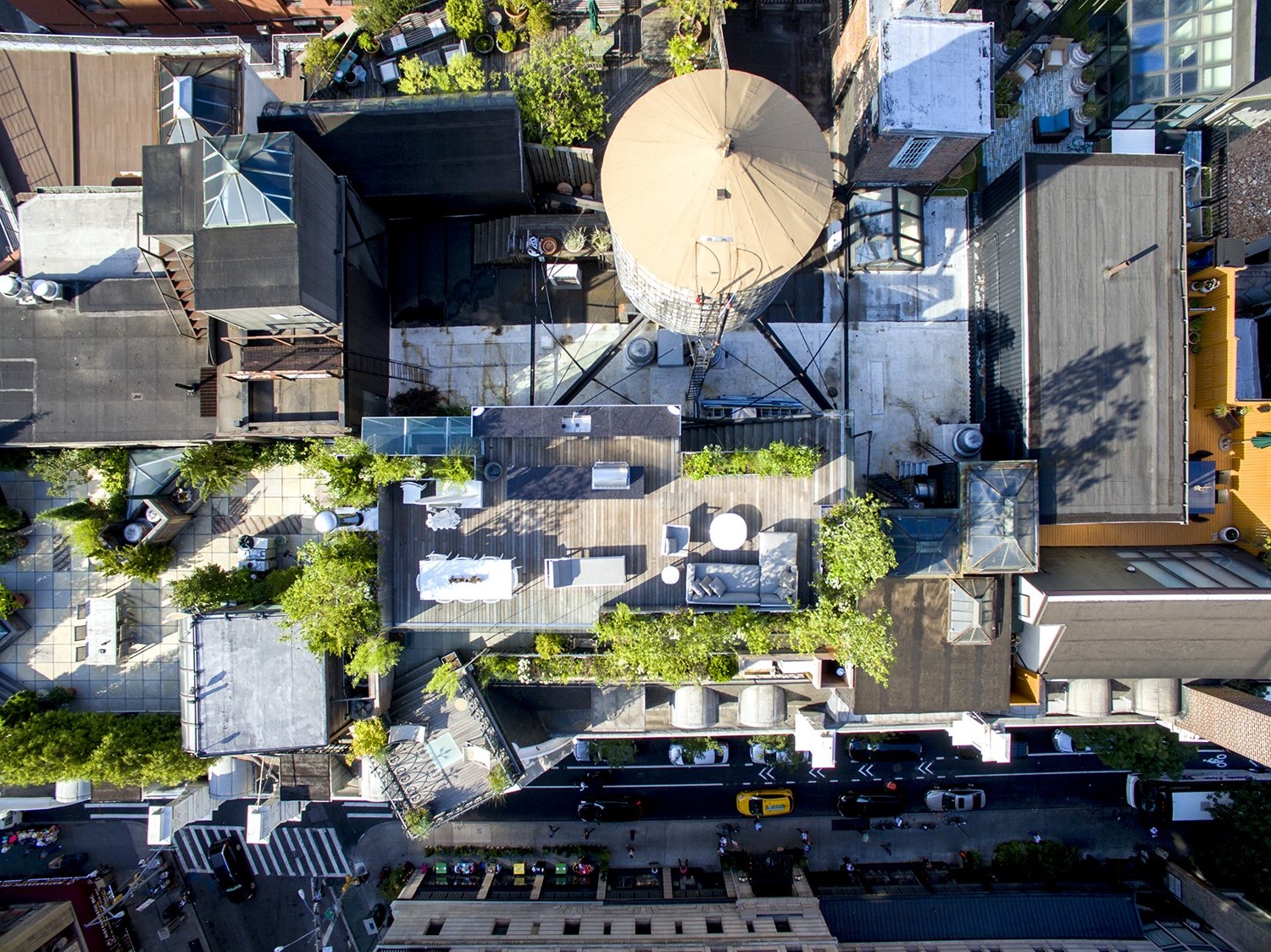
Penthouse Aerial – Photo by David Rahr / “In my home and in our designs, we interweave multi-level spaces and greenery, creating social condensers and gardens in the sky.”
GARDENS IN THE SKY
In my home and in our designs, we interweave multi-leveled spaces and greenery, creating social condensers and gardens in the sky. Vast roofs atop historic warehouses support a public park overlooking Manhattan: Empire Stores (workplaces and retail). Native Jamaica Bay plants inhabit the cracks between twisting architectural forms: Monarch Tower (residences). Football-field-sized green roofs and bridges link roofs of historic grain elevators: Silo City (arts, culture, recreation). Every residence, workplace, place for arts and recreation should have a garden, its own slice of artificial nature.

Empire Stores – Photo by Raimund Koch / “Vast roofs atop historic warehouses support a public park overlooking Manhattan.”
COMMUNAL SOIL
Artifice takes work and begins with dirt. Landscape Architect friend and collaborator, Ken Smith, reminds us that each tree’s root system rests primarily in the top 3-4 feet of soil, but roots extend the canopy’s width. In constrained urban areas, communal soil offers solutions; shared tree pits and interconnected plant beds encourage diverse competing plants. It’s true most contemporary landscapes are constructed on artificial ground and they need to function as living sustainable and resilient systems. Landscapes combine engineered platforms with living-systems. Science and nature return to their origins: there is now a movement towards using less processed un-screened local soils to retain their natural impurities (and benefits). Where can we find new dirt to remake our cities?
A rural farm in Scandinavia is the unlikely childhood home for the wife of a real estate mogul, together owning a slew of Midtown skyscrapers. And also own a huge farm outside Manhattan—that collects organic waste from their skyscrapers for composting. A potato enthusiast, she’s heard of our farmer friend Rick and requests an introduction. In the midst of the bustling greenmarket, she confronts him about heirloom seed potatoes: she can’t find them anywhere. Rick just smiles. Pulling out a ragged notebook, he offers a precious sack from his private sources. She’ll pay whatever he wishes.
Rick pauses to consider what he holds most dear. . . . . and asks if she could perhaps spare a little compost. Black gold recycled from rich organic detritus of midtown skyscrapers. From farm to city and back again– it’s all about dirt. Now she smiles.
EDGES
The line between city and country, artifice and nature continue to overlap in the age of the Anthropocene. Our designs blur lines—the edges that influence our approach to earth and ground. Edges where we are reconnecting neighborhoods, restructuring waterfronts, and reconnecting habitats. Urban transformation taking industrial and brownfield sites and returning them to active communities threaded with green spaces. Urban composting taking organic waste from towers and returning it to farms. Recapturing cities’ edges and reinventing landscapes helps us foster public health, public green spaces, affordable housing, and rejuvenating communities.
Back at the Greenmarket the following week I check in with Rick. I ask him, did you get any dirt for that small, precious sack of tiny seed potatoes? Rick just laughs. . . . .
She sent a whole truckload.
—
Written in collaboration with Ken Smith of Ken Smith Workshop
Lead Image: Halletts North Rendering – Courtesy of STUDIO V Architecture


